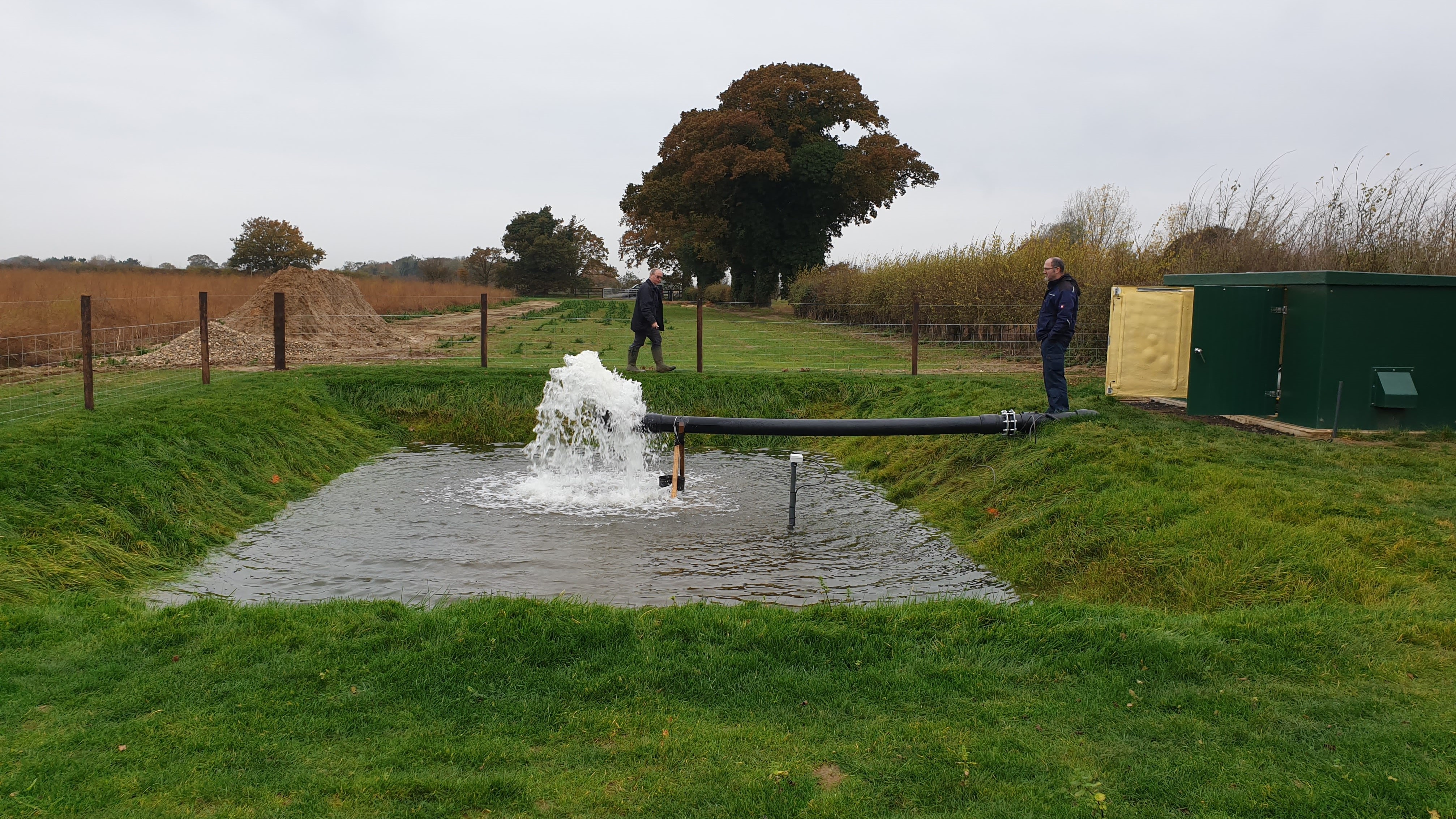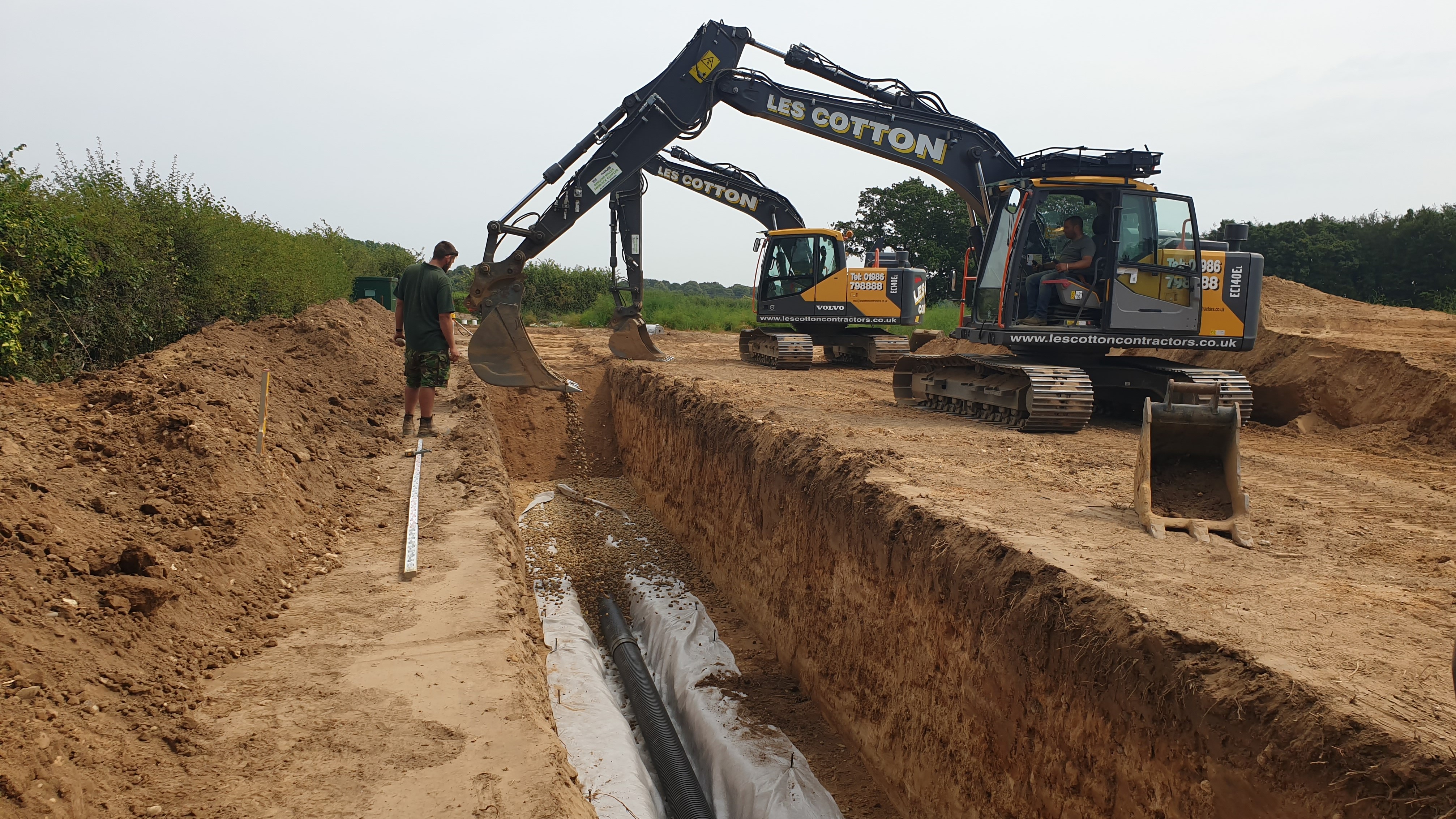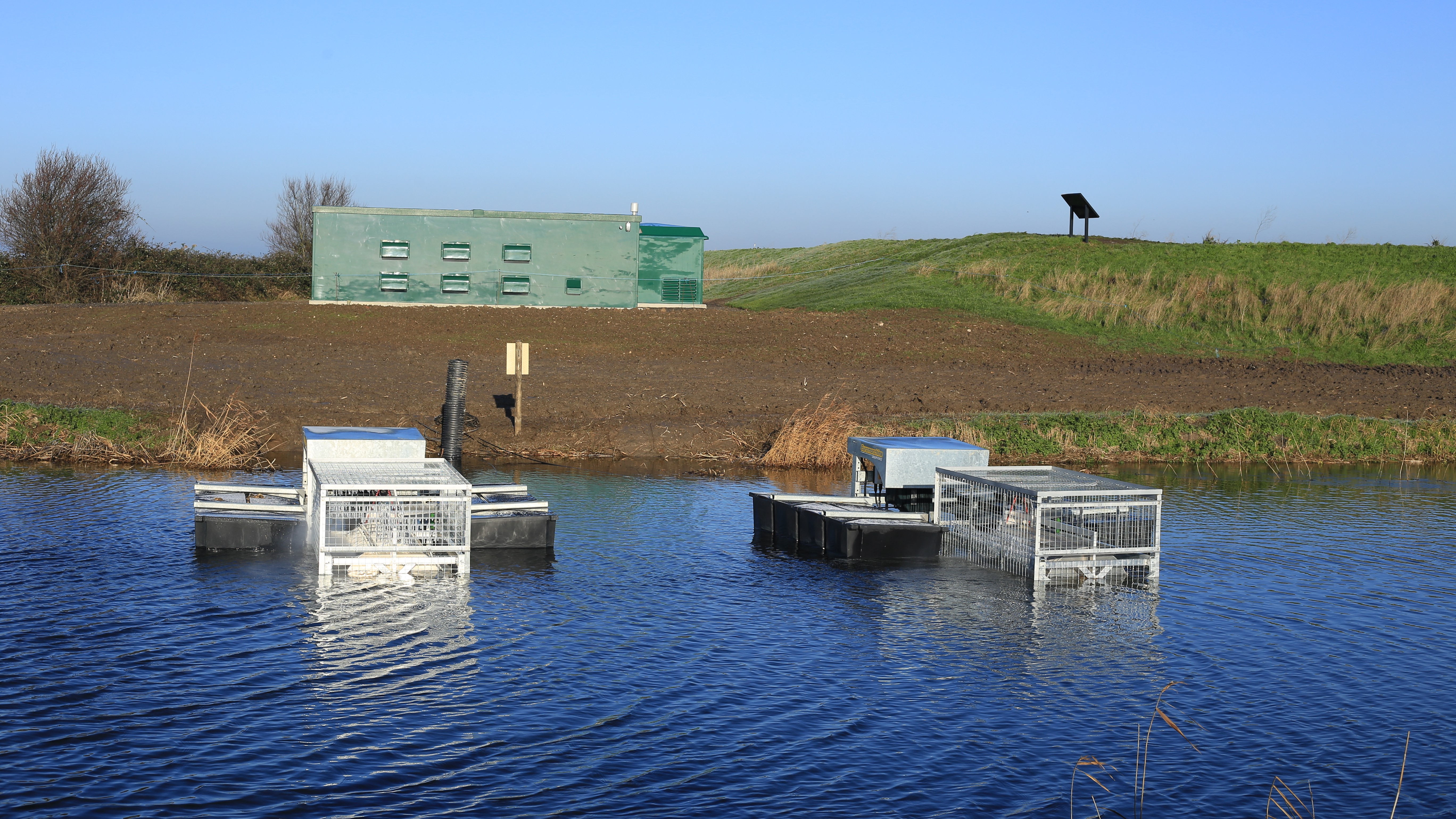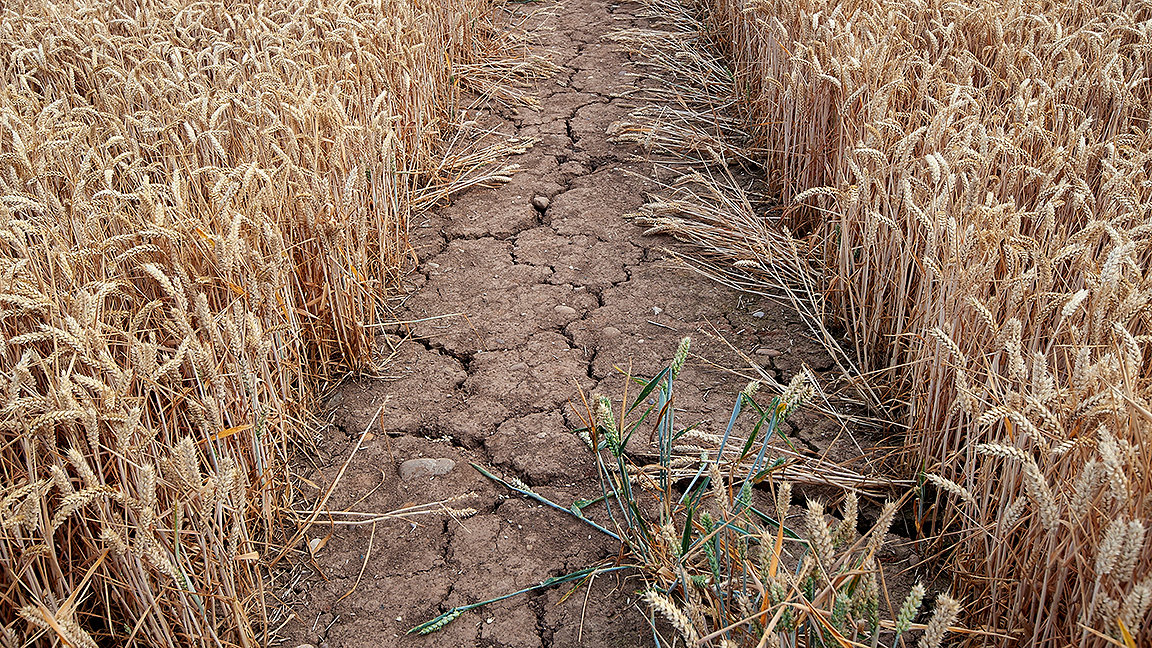
Cracked ground after dry weather in a field, all images © NFU
LJ: Why is water important to agriculture?
Kelly Hewson-Fisher: It is important across the breadth of agriculture.
We need good pressure through the system to provide drinking water for livestock. Many livestock producers access borehole water when our groundwater is depleted, and supplies run low as a result.
It is also important for grass growth. If we don't get that, it affects feed for our systems. Livestock have come in earlier this winter because the grass hasn't been in the fields owing to the summer drought. But that means using winter fodder, which then depletes the reserves. So farmers' costs increase and that has an impact on businesses.
On the horticultural side, crops, such as potatoes rely on rainfall as well as being irrigated. Approximately 50% of potatoes are irrigated, but the other 50% are reliant on rainfall. If we don't get that rainfall it can affect yield and quality. Water is required for our fruit and vegetable production and the ornamental sector –plants that are supplied to garden centres.
Then there are cereals, most rely on rainfall, but this year some have been irrigated where the infrastructure and water has been available.
All of that has an impact on business and the wider economy. Following the summer drought and the fact that many areas across England are still in drought status, there are concerns about water availability and the need to fill winter storage reservoirs which would be used for irrigation next season.
Many storage reservoirs finished the 2022 harvest season empty because we needed all the water that we had. Although recent rainfall through September to November has helped with river flows and the ability to abstract and refill reservoirs in the west of England, in East Anglia this is still a challenge. The winter abstraction period ends on 31 March therefore we need to complete reservoir fill by then to ensure security of water for the 2023 irrigation season.
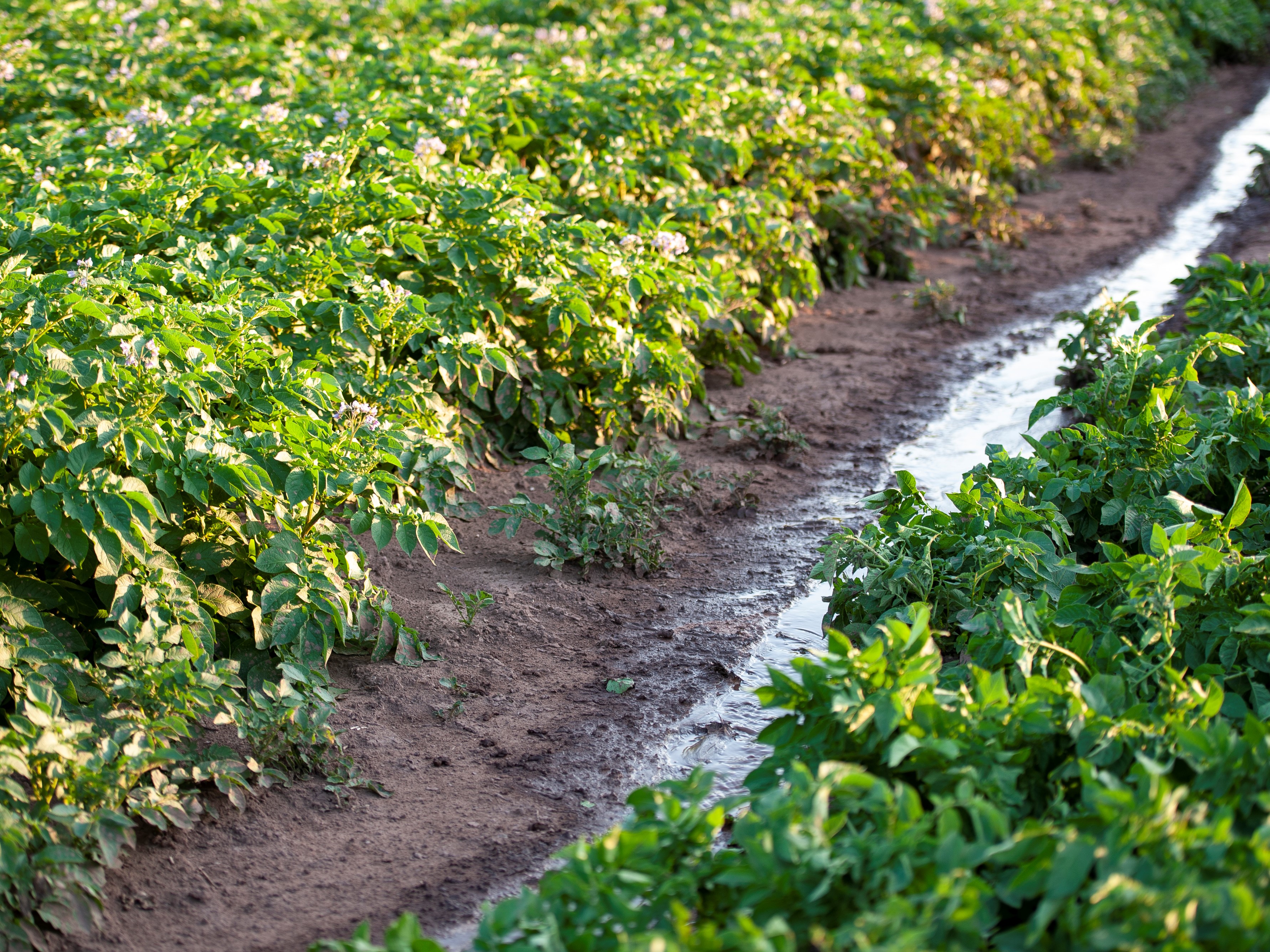
Irrigating potatoes
'There are concerns about water availability and the need to fill winter storage reservoirs for irrigation next season'
LJ: How secure is water supply in England and Wales at the moment?
KHF: At the time of writing, ten of the 14 areas of England remain in drought status despite recent rainfall. The remaining areas are either in prolonged dry weather, normal or recovery status. The Environment Agency (EA) will continue to monitor the situation.
Wales meanwhile is now recovering from drought. This means that most indicators are at or near the normal range for the time of year.
Recovery is the fourth of the EA's four stages used to describe and manage its response to drought. The first is moving to prolonged dry weather status, which represents the early stages of drought impacts on river flows and groundwater levels. The second is drought, which applies to many areas across England. The third is severe drought, and then the fourth is recovering from drought.
But what do we mean when we say drought? The EA doesn't have a single definition, and drought can be caused by periods of low or no rainfall, the length of time these last, and natural conditions such as temperature, lack of rainfall and soil moisture deficit. The impact on people, the environment, agriculture and businesses will vary.
Some droughts can be quite short and intense – for example, a hot, dry summer – while others take time to develop and can last for multiple seasons. The drought of 2022 was, for instance, caused by a persistent lack of rainfall coupled with high temperatures.
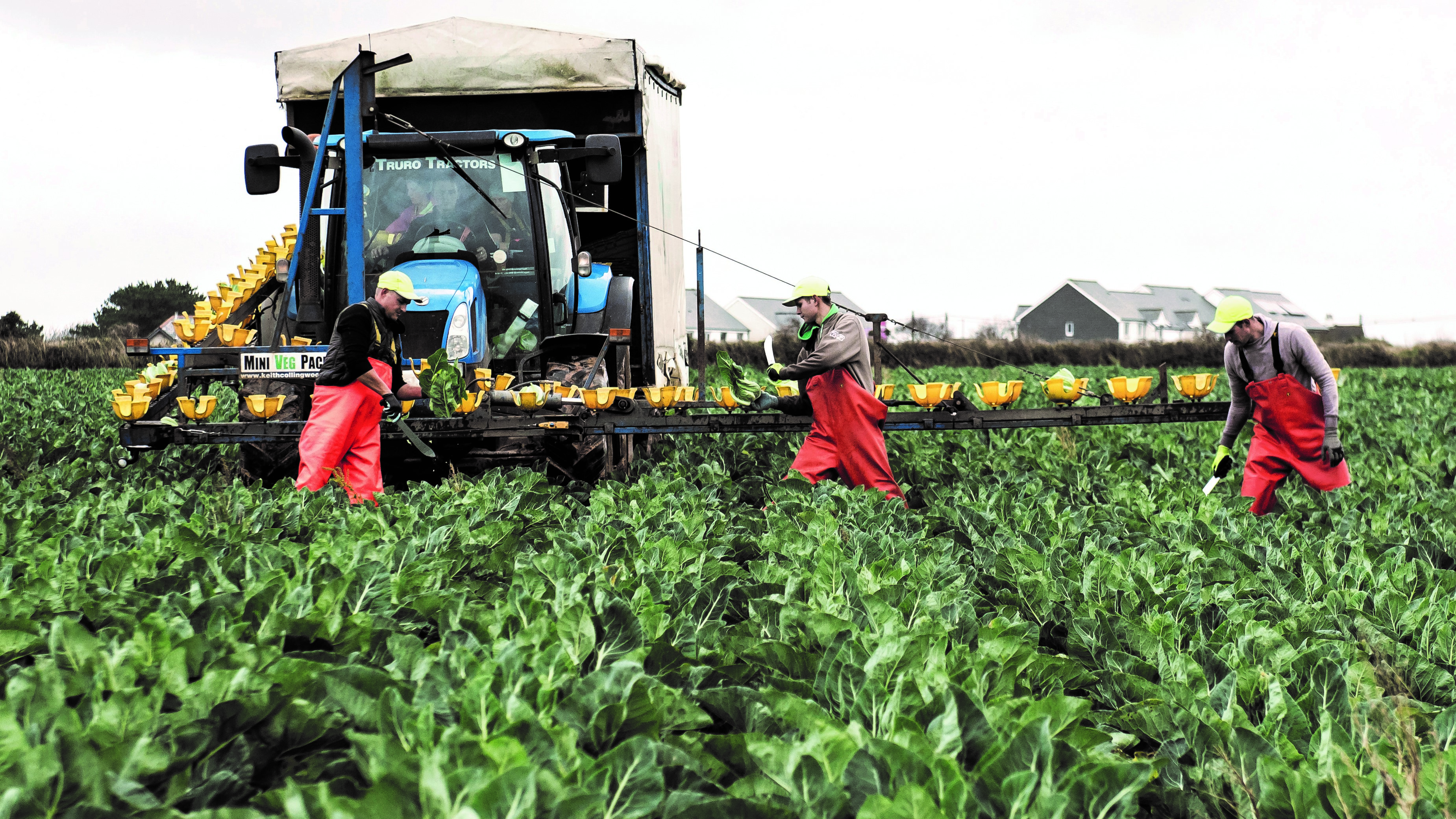
Harvesting vegetables
LJ: Do different regions have their own specific concerns?
KHF: The east coast has had a fairly continuous breeze, which has whipped soil and crop moisture away, coupled with high temperatures and a lack of rainfall which has compounded the impact.
Some would say are we now out of drought because we've had rainfall through September, October and early November, which would be classed as normal for the time of year, and which has supported river flows across the country. But we do understand the localised nature of the weather.
Rainfall patterns have been very different across the country, with catchments in some regions seeing little rain. We need to be aware of these local differences. Soils were already drier than we would expect coming into this autumn and winter. Rainfall has been short and intense. What we do need is some slow, steady rain that will support soil moisture and recharge our groundwater system, which supports our base river flows.
The Met Office and other agencies are seeing the trend for drier summers and wetter winters. But when do summer and winter begin and end? And will the rain come for sufficient periods that the soils retain moisture?
That's what we need to know to plan for the future.
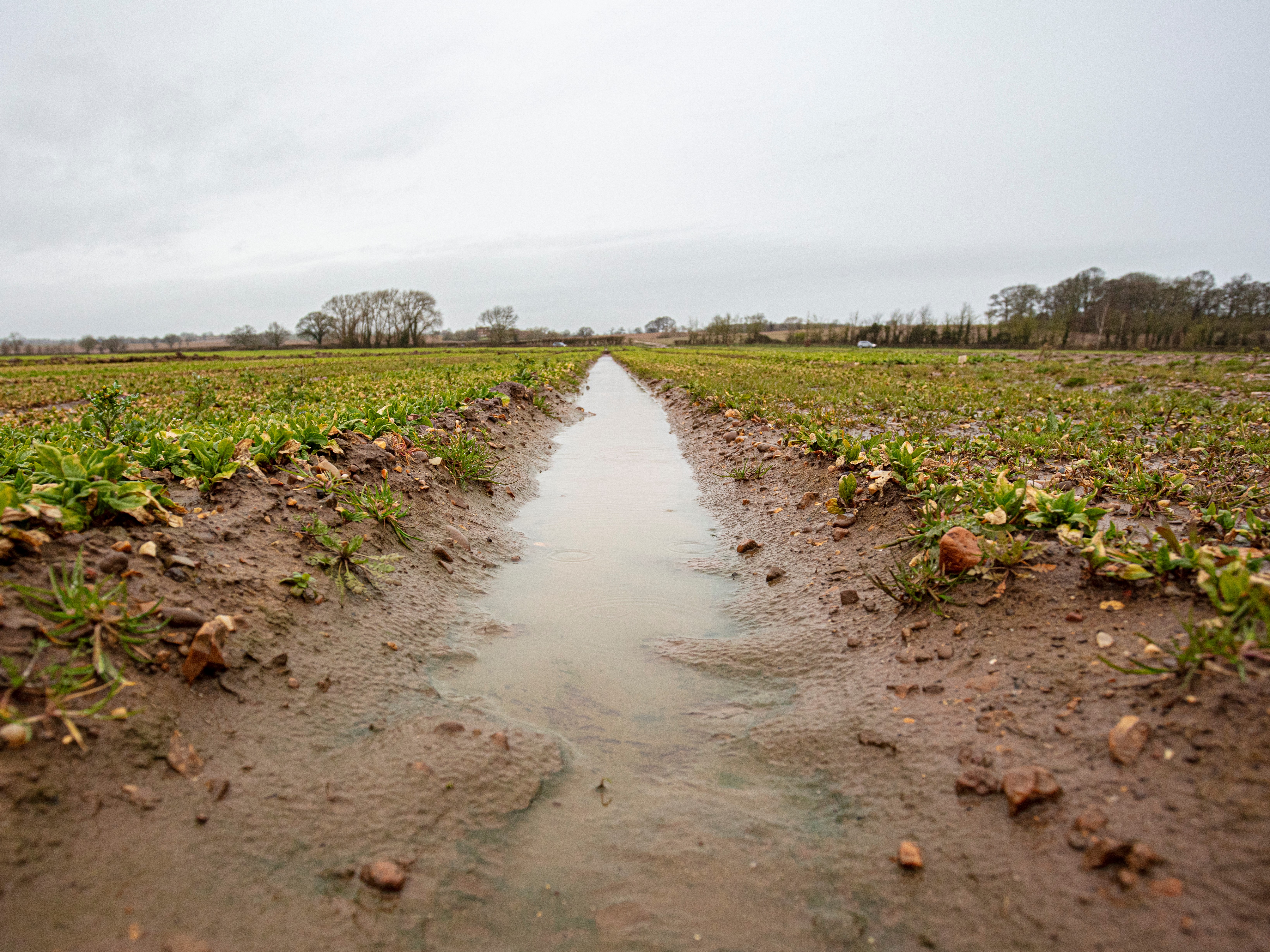
Waterlogged field, Warwickshire
LJ: What is the situation regarding abstraction licences?
KHF: River flows are still low for some, which means that many farmers and growers cannot abstract water despite the recent rainfall.
The winter abstraction period for many is from 1 November to 31 March. So on 1 November, we hoped farmers could abstract in line with the terms and conditions of their licences. This means there will be daily maximum quantities that they can take to fill their winter storage reservoirs.
But in some catchments the flows are still low, so abstraction has not taken place. When an abstraction licence is issued it may have a hands-off flow condition (as mentioned in Land Journal May 2020) that restricts abstraction in such conditions, to protect the environment and other users.
The EA can use other restrictions to control abstraction if needed. While the agency regards these restrictions, under section 57 of the Water Resources Act 1991, as a last resort, they have been used in some catchments in East Anglia during 2022, because this has been a challenging year for water resources. In addition, the EA can ask farmers to agree that they will voluntarily not abstract water, to try to manage levels.
LJ: Would a national water grid help redress these problems?
KHF: We certainly need to look at water resources planning for the agricultural sector. The national framework has set up five water resources regional groups that aim to look at their respective multi-sector water resources plan. That includes the public water supply and non-public water supply sectors. The non-public water supply sectors cover agriculture, energy and the environment.
How can we collaborate on a plan for water resource requirements to 2050 and beyond in all those sectors? From an agricultural perspective, we need to understand how much water we require in each catchment. How much is available for agriculture and thus, what's the deficit, and how do we collaborate to devise responses? At a national level, we also need to consider how that planning would look for agriculture.
We must ask, too, what infrastructure is required. Water never falls where we need it; so how can we get it to where it can be used, while protecting the interests of those that do have water? Can we support the agricultural sector better in terms of planning and resourcing for water resilience?
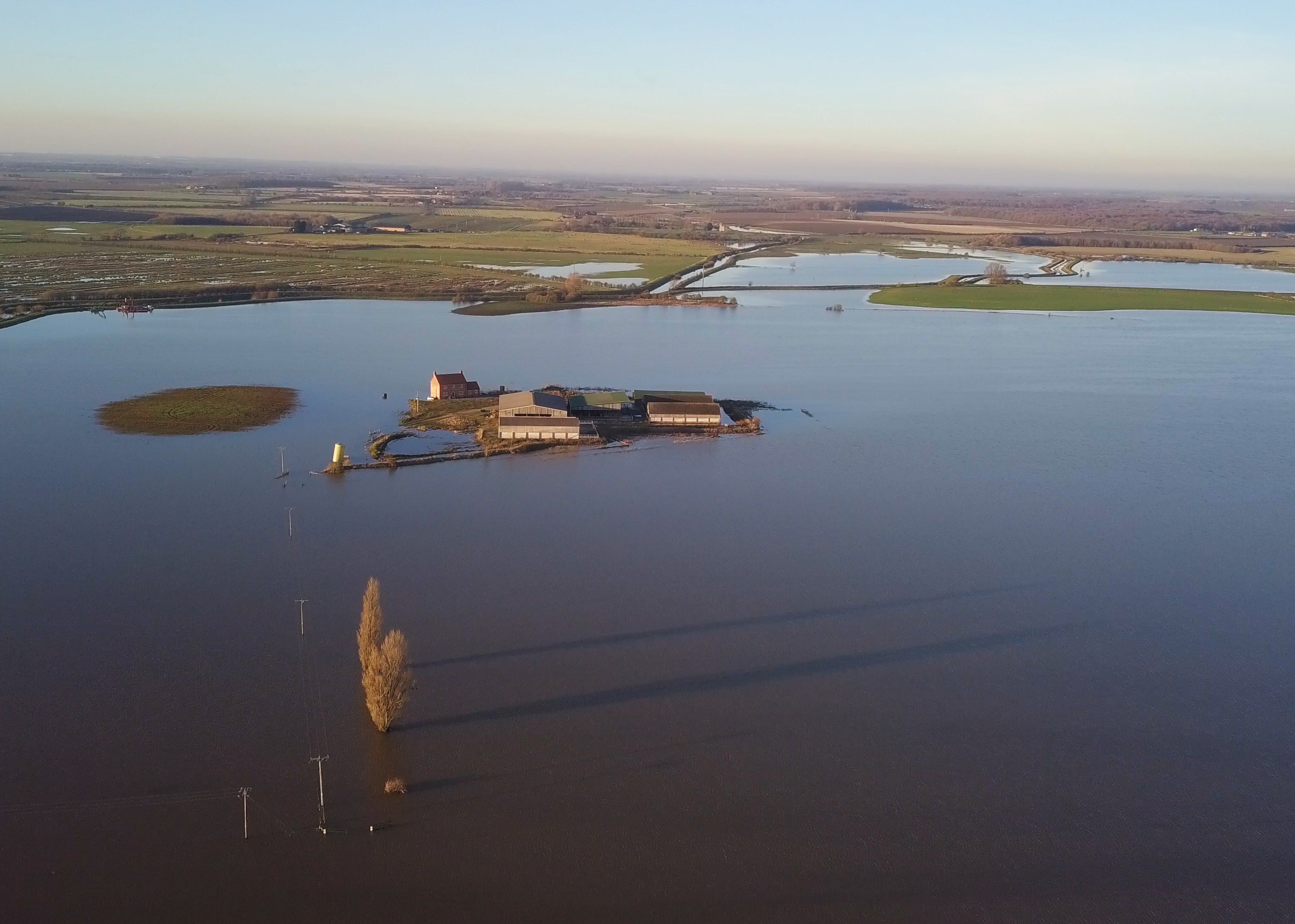
Flooded farm, Lincolnshire
There are some examples of good practice in the UK. The Felixstowe Hydrocycle project is a great example of a collaborative approach to the collection of water before it gets to the sea and using it to fill storage reservoirs. It can also recharge a groundwater aquifer. As water being let out to sea was causing some damage to the marshland, this project also protects that environment.
As an example of water being 'lost' to the sea, in the winter of 2020, the North Level Internal Drainage Board state they pumped 10.5m tonnes of water out to sea. Could we better use that water in some way if we planned better and had the infrastructure required?
Other examples of how we better use water in catchments include where the local internal drainage board holds an abstraction licence and works with a group of other users and growers to allocate volume to each for every season. If members don't use all that volume, it goes back into a pool so others can access it.
Another example is where stakeholders share storage reservoirs and then install the supporting infrastructure to get the water to other farm businesses.
The Water for Food Group is an independent forum of stakeholders and decision makers from the agricultural and horticultural sectors, who aim to raise the profile of water for food production and ensure that it is considered an essential need.
Stakeholders include water abstractor groups, those with specific crop interests, such as potatoes, vegetables, top and soft fruit, and nurseries, those with research interests, such as the Agriculture and Horticulture Development Board (AHDB), and Cranfield University, while others have a broader farming remit, such as National Farmers' Union (NFU), the Country Land and Business Association (CLA), and UK Irrigation Association (UKIA).
Recently, the Water for Food Group set up a task and finish group to look at the development of a long-term strategy for resilience to drought and water security risks.
The aim of this is to:
-
bring certainty to an uncertain world with the unpredictability of section 57 restrictions
-
be prepared for a changing climate and the challenges it brings
-
provide a framework that fits at national, regional and individual level to aid drought resilience and long-term investment planning.
LJ: What current incentives is the government offering farmers?
KHF: The Farming Transformation Fund's Water Management Grant offers funding to construct facilities such as winter storage reservoirs that allow water to be collected when it is more likely to be available and then stored for use later in the year.
There are three elements in this process. The first is making a successful planning application; the second is obtaining an abstraction licence from the EA; and the third is the grant itself. The challenges are that the abstraction licensing process is currently taking longer than normal and for some local authorities, they require the abstraction licence in place before approving the planning permission. The NFU is therefore asking the government to streamline the process.
Furthermore, construction costs have increased. While a grant of 40% of the scheme cost can be awarded, that grant might represent a lower percentage by the time the applicants come to build the reservoir.
It's important to remember that farmers and growers are already looking at ways they can meet water resource challenges themselves; for instance, monitoring soil moisture so they can apply water efficiently and effectively. Improving soil health as a benefit of this is it supports the water holding capacity of the soils.
LJ: What measures would help farmers?
KHF: There is never just one thing, and it's never a simple answer. But in the short term, we are asking the government to recognise that water for agriculture – food production – is an essential use.
A food risk assessment should be carried out when assessing water supplies.
The sector needs confidence that it can access water to fill the reservoirs this winter. If there isn't that confidence, growers will need to review what they're growing next year.
In the medium and long term, developing a planning framework is a priority.
We need to ensure that supply and demand is understood and can be forecast, and that potential solutions can be explored.

